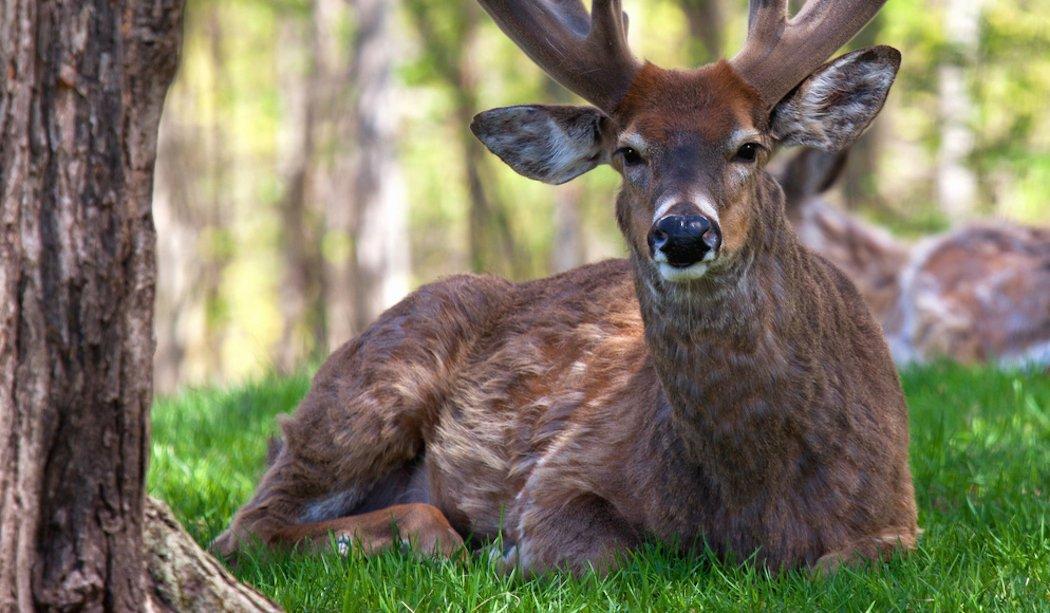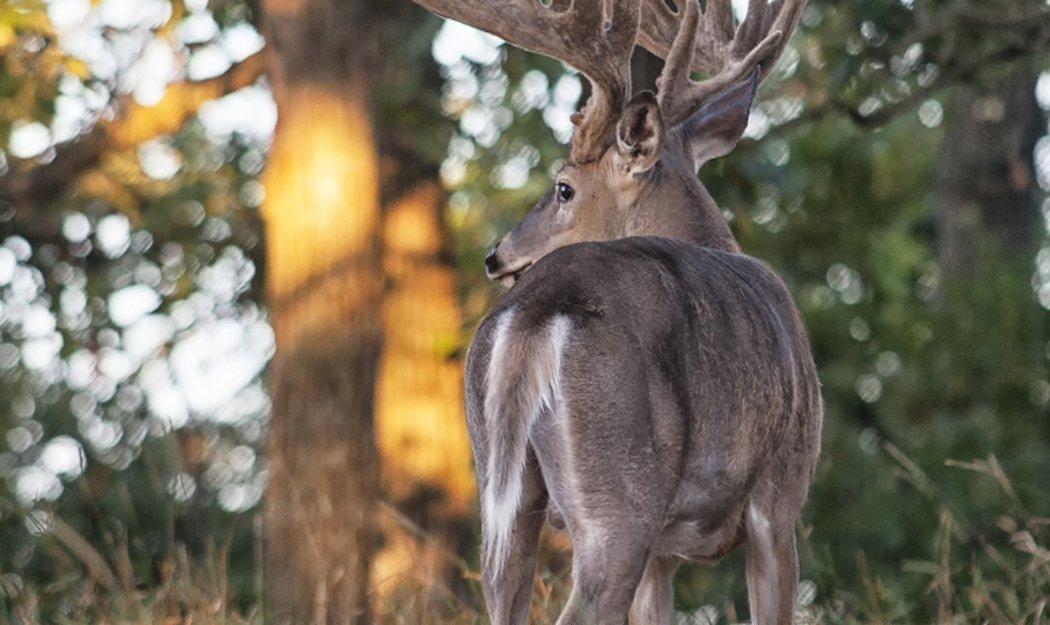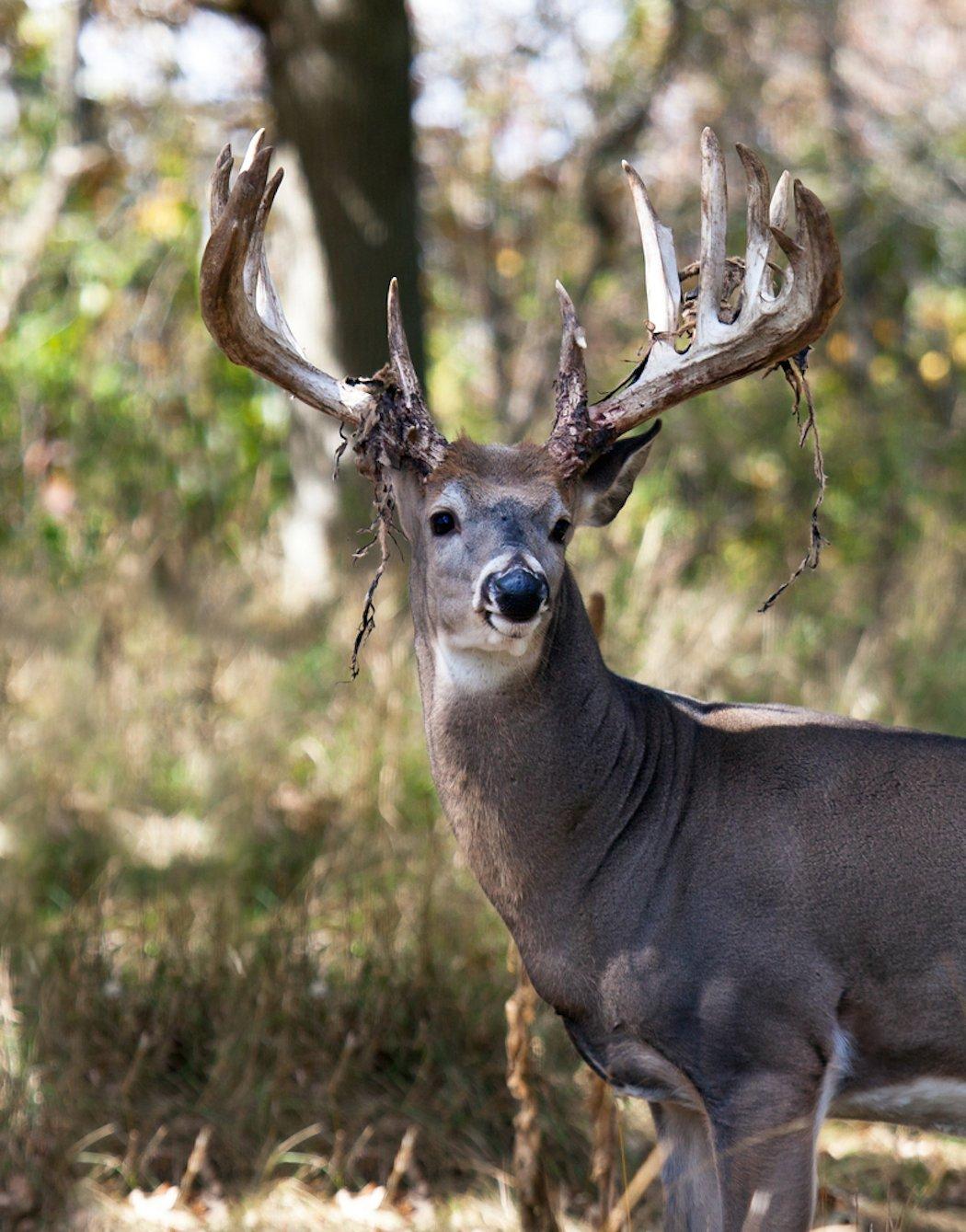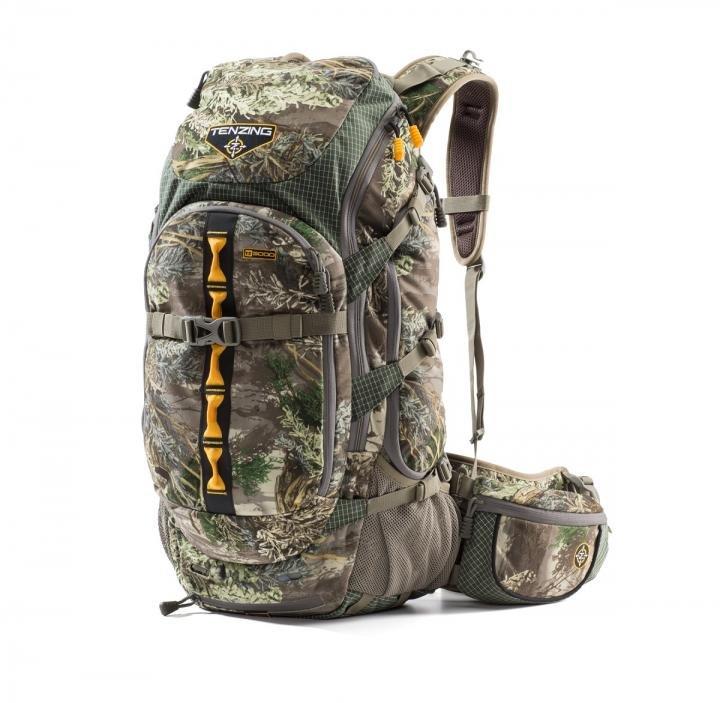A Weekly Behavioral Analysis of Mature Deer North of the 35th Latitude
We often like to think we have deer figured out. And when it comes to some things, we do. But there are many questions that remain unanswered.
Tenzing 3000 Big Game Hunting Pack in Realtree MAX-1
It's commonly noted that there are deer, and then there are mature deer. Some go as far to say the two are completely different species. Having hunted both, I'm inclined to fall in line with the latter. Tactics used to kill deer are not the same tactics used to kill old deer. Different behaviors and levels of human tolerance vary greatly.
Whitetails are extremely complex creatures with an undeniable convoluted ability to make very good hunters look really stupid. It's true. The white-tailed deer holds the uncanny ability to ‚ at will I might add ‚ humble the best of us. And that's perfectly okay. In fact, I prefer it that way.
Throughout the years, because of my career, I've been blessed to learn about whitetails from some of the greats. Sometimes, those greats were biologists and researchers. Other times, they were just really good deer hunters. But most of the time, those greats were whitetails. As they are the best teachers of deer behavior.
It's because of these best teachers that we're bringing you this gallery packed with information. After all, you do want to impress "the teacher" (a.k.a Mr. Whitetail) on the first day of class this fall, right? We thought so.

It's springtime outside. The daffodils are blooming. The trees and greenery are coming back to life. And antlers are starting to grow. The white-tailed buck is in the process of picking up the crown it threw down just a few months ago.
The antler-growing phase is truly shocking. The antler-growing process begins almost as soon as the antlers are dropped. Sometime in early spring, velvet-covered antlers begin to protrude from the pedicles. Growth peaks in late August throughout most of the whitetail range. Most bucks shed their velvet between mid-August and mid-September. Increasing levels of testosterone cause their velvet to peel off.
As for finding these incredible critters, many people say that spring scouting does nothing for fall hunting efforts. That's not true. For the most part, spring whitetails behave similarly to summer whitetails and roughly 40 to 50 percent of summer whitetails won't relocate come fall. That means almost half of the deer you monitor this off-season will still be there come deer season this fall.
There are numerous methods of scouting deer in the summer. I file those methods into two categories, low-impact and high-impact. I generally choose those that are low impact because I don't want to intentionally alert deer to my presence.
High Impact: I define this as any activity involving extensive time and efforts in close proximity to whitetails involving high risk of detection. That might be in-the-field scouting efforts looking for sign, hanging trail cameras near or in areas where deer bed, and any other activity in an attempt to collect information.
Low Impact: The key is to find the deer you want to hunt and learn as much as you can without alerting the deer or group of deer you're pursuing. That's a delicate relationship, but low-impact scouting strategies are the way to accomplish this goal.
The lowest impact strategy out there is scouting digitally. Using aerial and topography maps is a great place to begin. It's a great tool to identify potential bedding areas and travel routes and holds zero risk of alerting deer.
The next thing to consider ‚ and most certainly a crucial piece of the scouting puzzle ‚ is scouting from afar. It's far and away the best way to monitor deer movement without them having a chance to pick you out. Generally, that means getting no closer than 300 to 400 yards from the deer, if not farther. Get some good glass, find a good vantage point, and watch for deer.
Beyond that, trail cameras are great tools, if used properly. Placing cameras too close to bedding areas, putting them upwind of bedded deer, checking them too frequently, pulling cards at peak movement/feeding times, and checking cameras when the wind isn't in your favor are all costly mistakes that can't be undone and in turn makes low-impact efforts high-impact costs.

All in all, during the summer and early fall, it's all about food. Where the optimal food sources are located is where the majority of the local deer population will be. That's soybeans until the leaves begin to turn yellow. Then deer turn to alternative food sources such as other agricultural sources, soft mast and hard mast.
As for deer not located in agricultural-rich areas, mast, forbs and other greens will be the focus. It can be hard to locate deer, but all the more reason for implementing a solid scouting plan. Once you find the deer, keep up with the changing food sources to predict upcoming pattern changes.
Another key concept to keep in mind is water. People often overlook water when scouting. It's just as important as food. Studies have even shown that many deer go to water before food after rising from their daytime beds. That said, it can be difficult at times to take advantage of water when it's in abundant supply. And such is the case in many parts of the country this year with the above-average rainfall we've seen.
Once you've got all of the intel you can collect on the deer you're going to pursue, plot everything out on an aerial map. Document feeding destination, bedding areas and travel routes between the two. Plot camera locations and pinpoint potential stand sites. Then assess each potential stand site based on wind direction, risk of detection, and the potential of an encounter. Weigh these things and compare it to everything you learn during scouting efforts.
It's important to take things you hear about summer-to-fall transitions with a grain of salt. About half the outdoor writers I know will say summer scouting is useless and that all ‚ or at least the majority of ‚ bucks relocate to their fall ranges before the season begins. The other half swear by summer scouting and attribute their regular success to it. I'm caught in-between.
I will say that, in the last six years, I've killed five good bucks that I received summer velvet photos of and killed those deer within 150 yards of where I received regular summertime photos of them. Two of those bucks were taken in September, two in October, and one in November. Each of them kept their summer ranges as their fall ranges and core areas remained unaltered until I killed them. I also think it's important to say the two September bucks were taken on 40-acre properties, one October buck on a 25-acre parcel, the other October buck on a 40-acre tract, and the November buck on a 200-acre farm. That in itself is proof enough for me that summer scouting (even on small properties) is in fact worth the time spent conducting it.
Let's look at the flip side of this. Some bucks do in fact leave their summer ranges to spend the fall elsewhere. It's likely they choose to do that on their own. It's also likely that hunting pressure and/or human influence provoked them to seek out safer territories away from hunters. We don't fully understand this behavior yet. But that's what we do know.
It doesn't matter how you slice it. Summer scouting is beneficial. It is important. And you will see better results if you choose to scout for deer in summer.
Read: Summer Whitetails

Some hunters are fortunate enough to hunt velvet bucks. Kentucky and South Carolina are two of several that open deer season early enough to bring home a fuzzy-antlered whitetail. And man are the odds of success great for those who have the ability to hunt sometime during the first week of September.
Deer Behavioral Tip: Most bucks are probably still in bachelor groups. This can be especially good for tactical reasons. Oftentimes, bucks will group up with those that are close in age. However, sometimes mature bucks will join ranks with one or more yearling or 2-year-old deer. This is a good scenario for a hunter because the older deer typically fall into the habits of the younger deer and move more during daylight hours. I've personally witnessed this on countless occasions both via trail camera photos and in-the-field sightings. That said, the older deer are almost always in the back of the line and the younger deer file out first as sentries.
Hunting Tip: Find the hot food source. Then set up camp downwind of a trail that connects the preferred food to the bedding area(s) your target deer is/are using. Find areas where deer stage. Mature bucks will often hold up in staging areas and scan the area using their senses until dark.







